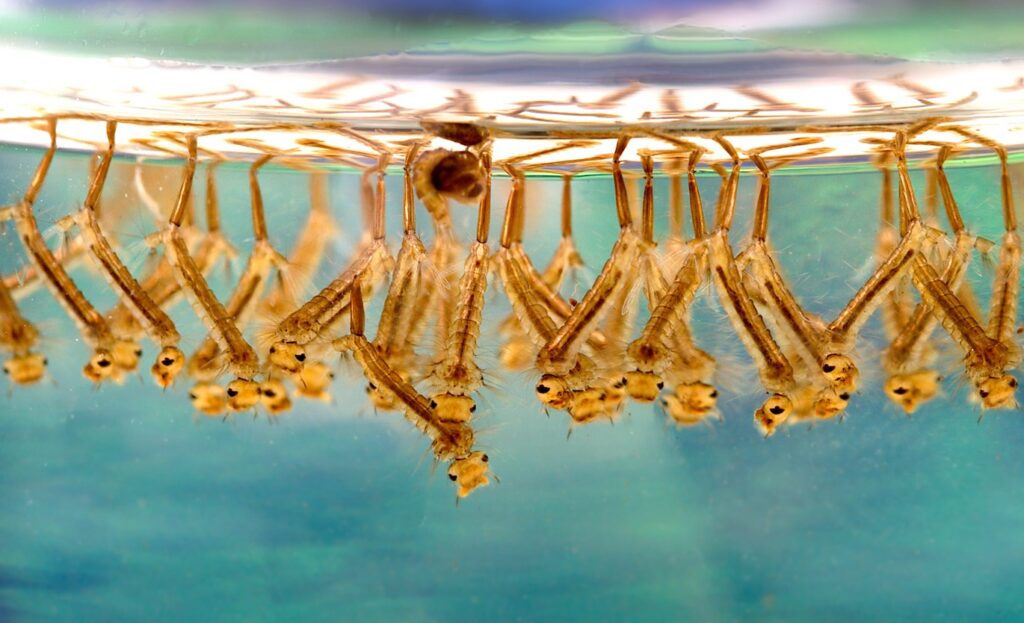Text and Photos by Henrylito D. Tacio
Additional Photos from Wikipedia
Crocodiles and sharks are not the deadliest living creatures. Public enemy number one is that tiny speck of a living thing that irritates many Filipinos on a daily basis. It’s called mosquitoes.
Every year, crocodiles kill 1,000 people while sharks manage to take ten lives. In contrast, mosquitoes snatch the lives of 725,000 people each year, according to the Geneva-based World Health Organization (WHO).
Philanthropist and Microsoft founder Bill Gates posted an infographic on his blog a few years back showing mosquitoes at the top of the deadliest animals list.
“Considering their impact, you might expect mosquitoes to get more attention than they do. Sharks kill fewer than a dozen people every year and in the United States they get a week dedicated to them on television every year. Mosquitoes kill 50,000 times as many people, but if there’s a TV channel that features Mosquito Week, I haven’t heard about it,” Gates wrote in his post.
Mosquitoes have been around for at least 350 years, the age of the oldest mosquito fossil. Beating their wings 300 to 500 times a second produces that distinctive whine that novelist D.H. Lawrence penned as a “small, high, hateful bugle” in his ear.
“Few animals on Earth evoke the antipathy that mosquitoes do,” wrote National Geographic. “Their itchy, irritating bites and nearly ubiquitous presence can ruin a backyard barbecue or a hike in the woods. They have an uncanny ability to sense our murderous intentions, taking flight and disappearing milliseconds before a fatal swat. And in our bedrooms, the persistent, whiny hum of their buzzing wings can wake the soundest of sleepers.”

There are over 2,500 different species of mosquitoes throughout the world, all of which live in specific habitats, exhibit unique behaviors and bite different types of animals. Though the average mosquito lifespan is only about three weeks, some varieties have been known to live as long as two months in laboratory conditions.
“Some mosquitoes have adapted perfectly to urban environments,” says Assistant Professor Richard Russell, head of the medical entomology department at the University of Sydney. “We unwittingly provide abundant standing water, from the tin cans and saucers to clogged gutters, septic tanks and drainage ditches.”
Mosquitoes track people down by sensing their body odors and temperature and the carbon dioxide human beings exhale. “Only female mosquitoes have the mouth parts necessary for sucking blood,” notes National Geographic. “When biting with their proboscis, they stab two tubes into the skin: one to inject an enzyme that inhibits blood clotting; the other to suck blood into their bodies. They use the blood not for their own nourishment but as a source of protein for their eggs.”
After a female-sucking mosquito has bitten, some saliva remains in the wound. The proteins from the saliva (called anticoagulants) evoke an immune response from man’s body. The area swells (the bump around the bite area is called a wheal), and people itch, a response provoked by the saliva. Eventually, the swelling goes away, but the itch remains until man’s immune cells break down the saliva proteins.
To treat mosquito bites, health experts advise that you should wash them with mild soap and water. Try to avoid scratching the bite area, even though it itches. Some anti-itch medicines or over-the-counter cortisone creams may relieve the itching. Typically, you do not need to seek medical attention (unless you feel dizzy or nauseated, which may indicate a severe allergic reaction to the bite).
But a more serious consequence of some mosquito bites may be a transmission of certain serious diseases such as malaria, dengue fever, yellow fever, and Japanese encephalitis. Malaria is caused by a parasite that grows in your bloodstream and can produce symptoms that develop anywhere from six to eight days to several months after infection.
Dengue is a mosquito-borne viral infection and is caused by one of four dengue viruses that produce a range of illnesses, from viral flu to hemorrhagic fever. “The increase in dengue cases in recent years is the result of the expanding geographical distribution of the mosquitoes which carry the virus,” the WHO reports. “At the same time, the rapid rise in urban populations has increased the number of people exposed to the virus.”
Mosquitoes are not only deadly, but they’re powerful, too. They have been manipulating the course of human history since its very beginning. Around 323 B.C., Alexander the Great was felled by a mosquito, dying from malaria at the age of 33. His dream of a united Greek empire collapsed within a few years, and widespread malarial infection contributed to the decline of Greek civilization.

Mosquito larvae (Photo from Wikipedia) 
Bitten by a mosquito, Oliver Cromwell died of malaria in 1658, paving the way for the return of the British monarchy. In 1905, mosquitoes almost succeeded in halting the construction of the Panama Canal, as panicked workers fled a yellow fever epidemic.
Meanwhile, what can you do avoid bitten by mosquitoes? There are several ways: Empty standing water in old tires, buckets, plastic covers, toys, or any other container where “wrigglers” and “tumblers” live. Keep swimming pools treated and circulating and rain gutters unclogged. Use mosquito repellents when necessary and follow label directions and precautions closely.
Use head nets, long sleeves, and long pants if you venture into areas with high mosquito populations, such as salt marshes. If there is a mosquito-borne disease warning in effect, be sure to stay inside during the evening when mosquitoes are most active.
There are several other ways. But in the meantime, follow those reminders.

